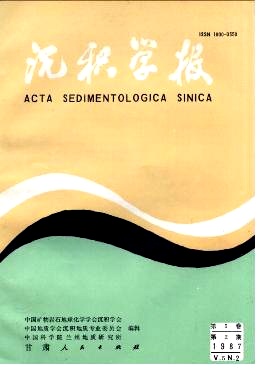COAL ACCUMULATION MODEL OF THE BAIGANG FORMATION IN BAISE BASIN AND ITS PREDICTING SIGNIFICANCE
- Publish Date: 1987-06-10
Abstract: The Eogene Baigang formation is a major coal-bearing and oil-producing member in Baise Basin. Based on the study of the paleoenvironment and syndeposi-tional structure of this formation, a coal accumulation model, reflecting that both paleostructure and paleoenvironment control over the formation of coal-rich zone has been established in this paper. It is suggested that by means of the analysis of seismic facies the model be efficiently used to predict the coal-rich zone in coal exploration. Baise Basin is a semi-graben basin (about 16 x 90km ) with a depositional fault on its northern margin, and a series of X-E faults developing in the basement as well as subordinate depressions and swells have been identified in the basin. They obviously influence the sedimentation of the formation. The depositional facies of the Baigang formation can be divided into three zones: ( 1 ) Alluvial fan and fan delta deposits along the northern marginal fault, mainly consisting of coarse debris flow and water-lain deposits. The vertical sequences from the proximal fan delta are of a distinct association. The fan deltas have deltaic upward-coarsing sequences consisting of three beds (a topset, a for-set and a bottomset ) , and an obvious sedimentary polycyclity. The topset bed, which sometimes includes channel-fill deposits of coarse conglomerate, are actu- ally the subaerial part of the fans progressing towards lake. Individual depositional lobes, wedge-shape in cross sections are from 30 to 90 m thick and have an area of about 16 square kilometers. ( 2 ) Shallow-deep lake deposites in the central part of the basin, including thin sandstone with some graded bedding, organic-rich shale and dark mud-stone with ostracods and fish fossils. ( 3 ) Lakeshore and small-scale deltaic deposits in the south of the basin, containing small-scale shore deltaic sandstone, and sandy mudstone with plenty of mollusks. bioturbate structures and small-scale cross beddings. The small-scale shore deltaic deposits are relatively thinner and finer than the fan deltaic deposits along the northern margin This asymmetric configuration of the facies is controlled by the structure framework of the semi-graben. There are three seismic facies units divided by different reflection characteristics. Unit 1 distributed over the area of the ( 1 ) facies zone is characteristic of a wedge-shspe geometry, chaotic or divergence-foreset texture, high amplitude, middle continuity and low frequence. These characteristics indicate the high energy sedimentation of fans and fan deltas in the northern margin. Unit 2 in the central part of the basin is characterized by sheet shape, parallel texture, high continuity, middle amplitude, and high frequency. These characteristics indicate the relatively stable and low-energy sedimentation of the deep-shallow lake. Unit 3 in the south of the basin is distinguished by subparallel texture, weak or middle amplitude, low continuity and middle frequence. The distribution of depositional facies zones therefore, may be identified by the analysis of seismic facies. The coal accumulation of the Baigang formation is controlled by both the distribution of depositional facies zones and the paleostructure condition. The coal -rich zones are coincided with subordinate depressions and parallel to the facies zones ( 1 )and ( 3 ) of the basion and the coal-rich centers are separated by the little fan deltas, which are the most potentional oil reservoirs. The interdeltaic bays or areas, lacking the coarse detritus carried by rivers, are interpreted as the most favourable places to peat accumulation. As a result of the different subsidence along both sides of the basin, the coal-rich zone on the northern side of the marginal fault is markedly thicker than that on the other side. It may be seen that identifying the configuration of depositional facies and paleostructure condition is most important in the orediction of coal-rich zones, while the analysis of seismic facies units will be conductive to reconstructing the distribution of depositional faci
| Citation: | Lin Changsong. COAL ACCUMULATION MODEL OF THE BAIGANG FORMATION IN BAISE BASIN AND ITS PREDICTING SIGNIFICANCE[J]. Acta Sedimentologica Sinica, 1987, 5(2): 113-124. |






 DownLoad:
DownLoad: